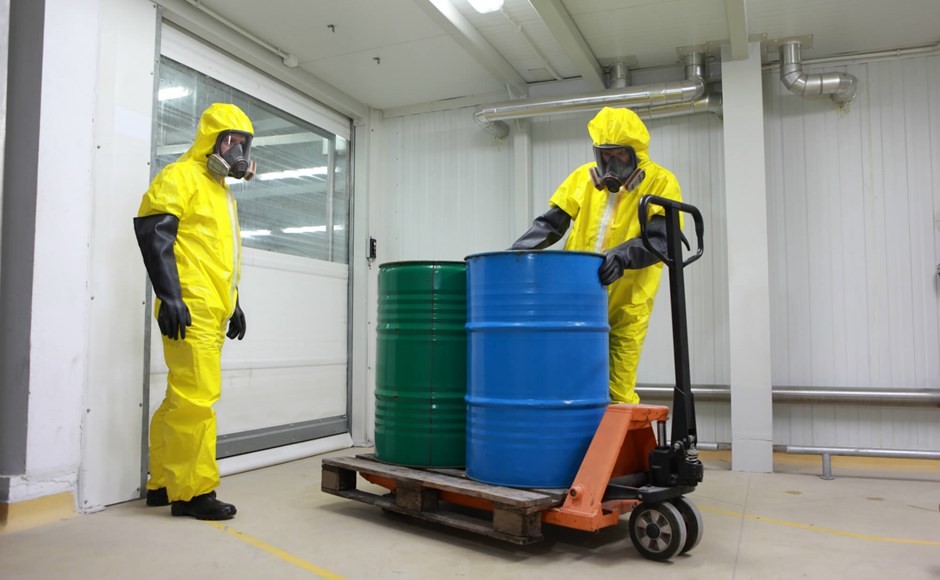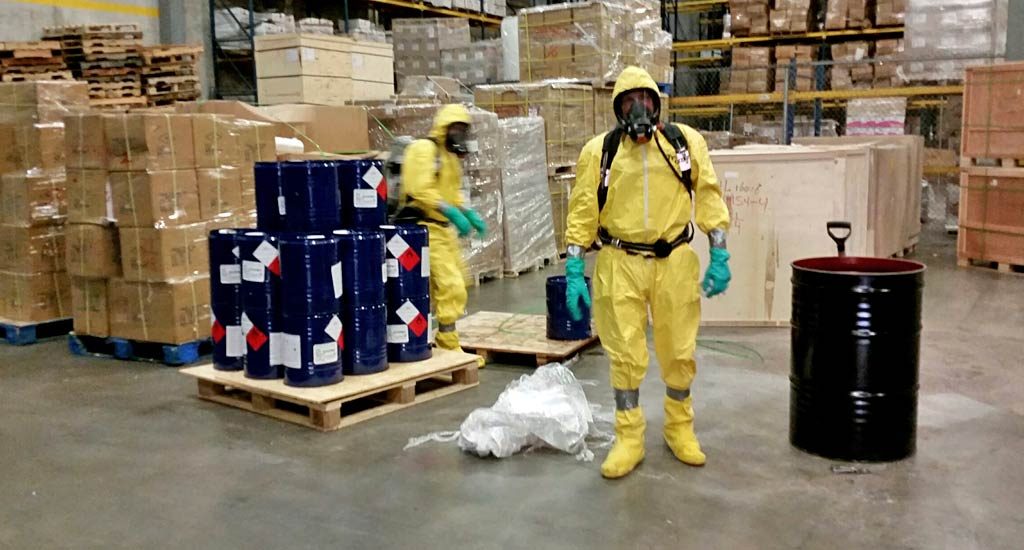Personal protective equipment, commonly referred to as “PPE”, is equipment worn to minimize exposure to hazards that cause serious workplace injuries and illnesses.

These injuries and illnesses may result from contact with chemical, radiological, physical, electrical, mechanical, or other hazards. Personal protective equipment may include items such as gloves, safety glasses and shoes, earplugs or muffs, hard hats, respirators, or coveralls, vests and full body suits.
- The OSHA HAZWOPER Standard (29 CFR Part 1910.120) – requires that all workers that are exposed to or handle hazardous materials must take a 24hr or 40hr HAZWOPER Training Course and an 8hr Annual Refresher.
- 8hr Refresher: $40 / 24-hour: $155 / 40-hour: $255
- Enter Promo Code "train10off" at Checkout
Four Levels of PPE
Combinations of PPE are classified generally into four levels, ranging from the most protective (Level A) to the least protective (Level D).
Each level of PPE, described below and detailed in Appendix B of the Hazardous Waste Operations and Emergency Response (HAZWOPER) standard (29 CFR 1910.120), consists of a combination of protective equipment and clothing that help reduce respiratory, eye, skin, and other types of exposures.
Level A
Level A protection is required when the greatest potential for exposure to hazards exists, and when the greatest level of skin, respiratory, and eye protection is required. Examples of Level A clothing and equipment include:
- positive pressure, full face-piece self contained breathing apparatus (SCBA) or positive pressure supplied air respirator with escape SCBA;
- totally encapsulated chemical- and vapor-protective suit;
- inner and outer chemical-resistant gloves; and
- disposable protective suit, gloves, and boots.
Level B
Level B protection is required under circumstances requiring the highest level of respiratory protection, with lesser level of skin protection. At most abandoned outdoor hazardous waste sites, ambient atmospheric vapors or gas levels have not approached sufficiently high concentrations to warrant level A protection. Examples of Level B protection include:
- positive pressure, full face-piece self contained breathing apparatus (SCBA) or positive pressure supplied air respirator with escape SCBA;
- inner and outer chemical-resistant gloves;
- face shield;
- hooded chemical resistant clothing;
- coveralls; and
- outer chemical-resistant boots.
Level C
Level C protection is required when the concentration and type of airborne substances is known and the criteria for using air purifying respirators is met. Typical Level C equipment includes:
- full-face air purifying respirators;
- inner and outer chemical-resistant gloves;
- hard hat;
- escape mask; and
- disposable chemical-resistant outer boots.
Level D
Level D protection is the minimum protection required. Level D protection may be sufficient when no contaminants are present or work operations preclude splashes, immersion, or the potential for unexpected inhalation or contact with hazardous levels of chemicals. Appropriate Level D protective equipment may include:
- gloves;
- coveralls;
- safety glasses;
- face shield; and
- chemical-resistant, steel-toe boots or shoes.
While these are general guidelines for typical equipment to be used in certain circumstances, other combinations of protective equipment may be more appropriate, depending upon specific site characteristics.

OSHA Regulations for PPE
This section highlights OSHA standards, Federal Register notices (rules and proposed rules), directives (instruction to OSHA staff), and letters of interpretation (official letters of interpretation of the standards) related to PPE.
General Industry (29 CFR 1910)
- 1910.94, Ventilation [related topic page]
- 1910.95, Occupational noise exposure [related topic page]
- 1910.120, Hazardous waste operations and emergency response [related topic page]
- 1910.132, General requirements (Personal protective equipment)
- 1910.133, Eye and face protection [related topic page]
- 1910.134, Respiratory protection [related topic page]
- 1910.135, Head protection
- 1910.136, Foot protection
- 1910.137, Electrical protective equipment
- 1910.138, Hand protection
- 1910.140, Personal fall protection systems
- 1910 Subpart I – Appendix A, References for further information (Non-mandatory)
- 1910 Subpart I – Appendix B, Non-mandatory compliance guidelines for hazard assessment and personal protective equipment selection
- 1910.146, Permit-required confined spaces [related topic page]
- 1910.252, General requirements (Welding, cutting, and brazing) [related topic page]
- 1910 Subpart Z, Toxic and hazardous substances [related topic page]
Shipyard Employment (29 CFR 1915)
- 1915 Subpart I, Personal protective equipment
Marine Terminals (29 CFR 1917)
- 1917 Subpart E, Personal protection
Longshoring (29 CFR 1918)
- 1918 Subpart J, Personal protective equipment
